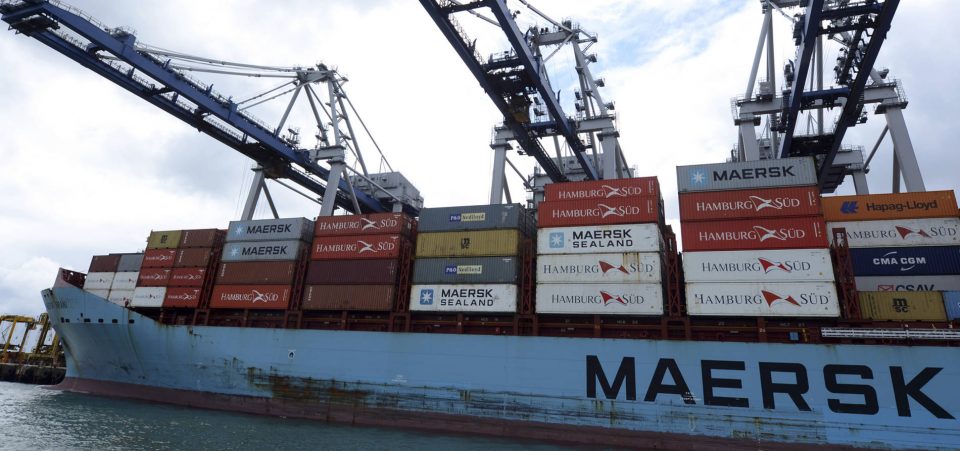Low Oil Prices Also Cut Margins for Maersk
If you want to gauge the health of the global economy, there isn’t a better indicator than the volume of freight movement between continents.
And here is bad news for those expecting a recovery in global growth and commodity prices: Danish shipping and oil company A.P. Moller-Maersk A/S (OTCMKTS:AMKBY) said its third-quarter profit plunged 43%, as sustained weak freight rates and low oil prices cut its profit margins.
Maersk’s shares tumbled as much as nine percent in Copenhagen as investors fear that the worst isn’t yet over in the shipping industry—the company’s biggest sector—which is struggling to emerge from the deepest down-cycle in 30 years.
“The Group continued to be significantly impacted by market imbalances, leading to sustained low container freight rates and a low oil price environment,” the company said in the earning statement released today.
“Maersk Line,” the company’s shipping unit and the world’s biggest container operator, swung to a loss of $122.0 million, from a profit of $243.0 a year ago. (Source: “Interim Report Q3 2016,” A.P. Moller-Maersk A/S , November 2, 2016.)
Net profit for the company dropped to $429.0 million from $755.0 million a year earlier. Revenue decreased by $933.0 million, or 9.2%, compared to the same period a year ago, led by weak shipping volumes at its shipping unit and lower average freight rates.
Maersk kept its full-year profit guidance at below $1.0 billion, significantly lower than last year’s $3.1 billion, due to developments in the global economy, container freight rates, and weak oil prices. Maersk also has a separate oil business where revenue fell by eight percent. (Source: Ibid).
And it seems there isn’t much upside left in the recent oil price rally which started after the oil-producing nations agreed last month to cut production, but later were unable to agree on details.
Today, oil prices extended their decline after data from the United States showed the biggest weekly crude surplus on record. The supply data prompted sell-off in the oil markets as traders doubted that the two years of oversupply in the oil markets is coming to an end.
U.S. crude futures fell $1.33, or 2.9%, to $45.34 a barrel on the New York Mercantile Exchange. Brent Crude, the global benchmark, fell $1.28 a barrel, or 2.7%, to $46.86 a barrel on ICE Futures Europe. Both posted their seventh loss in eight sessions and their lowest settlements since September 27.






